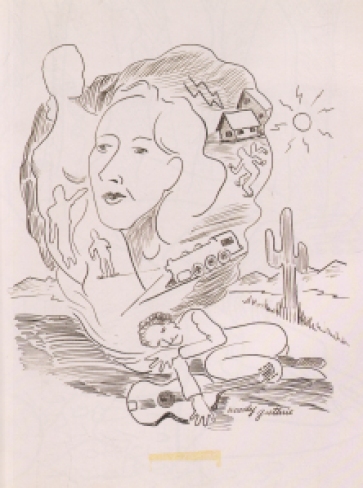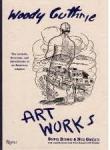
Although he achieved a host of national honors and adorned U.S. postage stamps, and although his song This land is your land is widely considered the nation’s second national anthem, Woody Guthrie committed his life to radical struggle.
Guthrie’s political awakening and activism can be traced throughout the Great Depression, World War II, the Cold War, the Korean War, the Civil Rights struggle, and the poison of McCarthyism. He played a major role in the development of a workers’ culture in the context of radical activism, particularly through his influence on the U.S. and international protest song movement.
This according to Woody Guthrie, American radical by Will Kaufman (Urbana: Universty of Illinois Press, 2011; RILM Abstracts of Music Literature 2011-1681).
Today is Woody Guthrie’s 110th birthday! Below, Emmylou Harris and his son Arlo present Woody’s classic take on a still-timely topic. Guthrie was inspired to write Deportee by what he considered the racist mistreatment of Mexican migrant farm workers before and after a 1948 airplane crash that killed 32 people. Subsequent news coverage only named the four U.S. citizens who died in the accident, so Guthrie sought to identify the 28 fallen Mexicans as real people as well.
Related article: Woody Guthrie, visual artist





